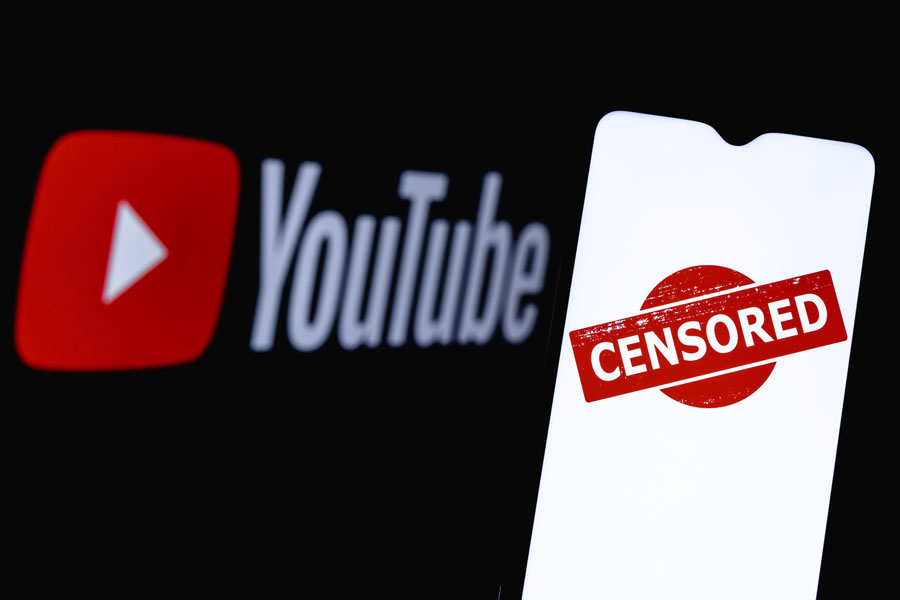Google to Reinstate YouTube Accounts Banned Under Past COVID-19 and Election Rules; Will Monetization Return?

WASHINGTON, DC – Google’s video platform YouTube is preparing to restore access to channels that were permanently removed under policies targeting COVID-19 and election-related misinformation, a shift that marks a major change in how the company enforces its content rules.
The move comes after YouTube officially retired its pandemic-specific misinformation policies in December 2024, consolidating them into broader medical misinformation guidelines. Restrictions related to claims of fraud in past U.S. elections were phased out even earlier, in 2023. With those rules no longer active, accounts terminated under them will now be eligible for reinstatement.
YouTube will launch the change through a pilot program rather than opening the door to all affected users at once. Only a subset of creators who lost their accounts under the now-defunct policies will be reviewed initially, but the plan signals a broader rollback in the months ahead. The company has not yet detailed how it will determine eligibility or whether monetization will be restored.
The decision could impact several well-known political commentators and media personalities whose channels were banned at the height of the pandemic and following the 2020 election. Names such as Dan Bongino, Steve Bannon, and Sebastian Gorka have been highlighted in reports as among those potentially eligible to return.
However, reinstatement is not automatic. Users attempting to create new accounts in place of terminated ones, such as far-right commentator Nick Fuentes and Alex Jones, have already found themselves quickly removed again under YouTube’s standing prohibition on circumventing bans.
The change follows years of criticism that YouTube and other platforms suppressed political speech under government pressure. Congressional investigations revealed that White House officials made repeated requests during the pandemic for certain videos to be taken down, sometimes even when the content did not clearly violate YouTube’s written rules.
The broader political climate has shifted as well. Courts, including the U.S. Supreme Court, have weighed in on whether government agencies crossed a constitutional line in encouraging social media companies to remove content. Although earlier lower-court rulings suggested possible collusion, the high court dismissed those cases on standing grounds in 2024.
It remains unclear how many creators will be reinstated under the pilot program or whether YouTube will expand the process to cover other categories of content previously restricted. Questions also remain about whether advertisers will support restored channels, given the reputational concerns tied to controversial topics.
For now, the reinstatement policy marks a significant recalibration of YouTube’s approach, one that underscores the balancing act tech companies face between enforcing platform standards and responding to shifting political and cultural pressures.
YouTube Reinstatement Policy
| Key Detail | Information |
|---|---|
| Platform | YouTube (owned by Google/Alphabet) |
| What’s Changing | Channels banned under COVID-19 and U.S. election misinformation rules are now eligible for reinstatement |
| Policy Status | COVID-19 policy retired Dec. 2024; election policy retired in 2023 |
| Rollout | Pilot program with a subset of creators; not all accounts restored immediately |
| Notable Names Impacted | Dan Bongino, Steve Bannon, Sebastian Gorka (among others) |
| Exceptions | New accounts created to replace terminated ones remain prohibited |
| Reason for Shift | Broader free-expression push; response to political pressure and retired policies |
| Outstanding Questions | Will monetization return? How many creators will be reinstated? What criteria will be used? |
Q&A: YouTube’s Reinstatement of Banned Accounts
Q: Why is YouTube reinstating banned accounts now?
A: YouTube retired its COVID-19 misinformation rules in December 2024 and had already phased out its election-related policies in 2023. Since those policies no longer exist, the company is offering creators who were banned under them a path back.
Q: Does this mean all banned accounts are coming back?
A: Not immediately. YouTube is running a pilot program that will review a subset of creators first. The company has not said exactly how many accounts will be reinstated or what criteria will apply.
Q: Will reinstated channels get monetization back?
A: That remains unclear. YouTube has not confirmed whether advertising and revenue opportunities will return automatically for reinstated accounts.
Q: What about users who try to start new channels after being banned?
A: YouTube’s long-standing policy against ban evasion still applies. Creators cannot simply launch new accounts to get around a termination.
Q: Who are some of the notable figures affected?
A: Reports mention conservative commentators such as Dan Bongino, Steve Bannon, and Sebastian Gorka as examples of banned users who may now be eligible.
Q: How is politics influencing this decision?
A: Google has faced heavy criticism and congressional scrutiny over content moderation during the pandemic and after the 2020 election. Restoring accounts is part of a broader shift toward emphasizing free expression and reducing the perception of political bias.


